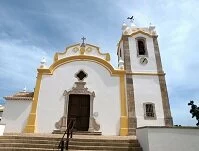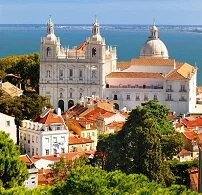
Nossa Senhora da Conceicao
The Gothic style in Portugal is primarily found in churches today. The Alcobaca Monastery (1153-1200s) best displays the Portuguese variety on this larger style. Few other early Gothic examples are worth noting though, as the style in Portugal truly emerged later. The extraordinarily unusual Monastery of Batalha (1385) is a late Gothic structure unlike any other building. The gothic period continued until the early 1500s and this time period includes one of the purest examples of Portuguese architecture in the Monastery of the Hieronymites (begun in 1502).
As Portugal reached its peak of power in the 1500 and 1600s, their architectural achievements during this time somewhat represent this, but there wasn't as much building as expected during a prosperous time. The Renaissance and Baroque styles, popular in much of Europe at the time, weren't well liked by the Portuguese so little from these styles were built. Most of the structures that were built in these styles are in Tomar, which was home to the seat of the Order of Christ, which oversaw most of Portugal's overseas territories. In Tomar, the Nossa Senhora da Conceicao (1532-1540), the Cloister of John III, and the town square are all in either the Renaissance or Baroque style.

Church in Lisbon
During this same time, Evora was home to the Portuguese kings so developed a unique style of whitewashed buildings and homes, which directly led to the growth of this style in Brazil and in other Portuguese colonies.
In the 1800s the neo-Classical style rose in popularity, particularly in Lisbon after the city was struck with an earthquake and had to be re-built. The Ajuda National Palace in the capital is a prime example from this time period. Also in the 1800s the similarly styled Romantic period flourished and the town of Sintra is a great example of this style.